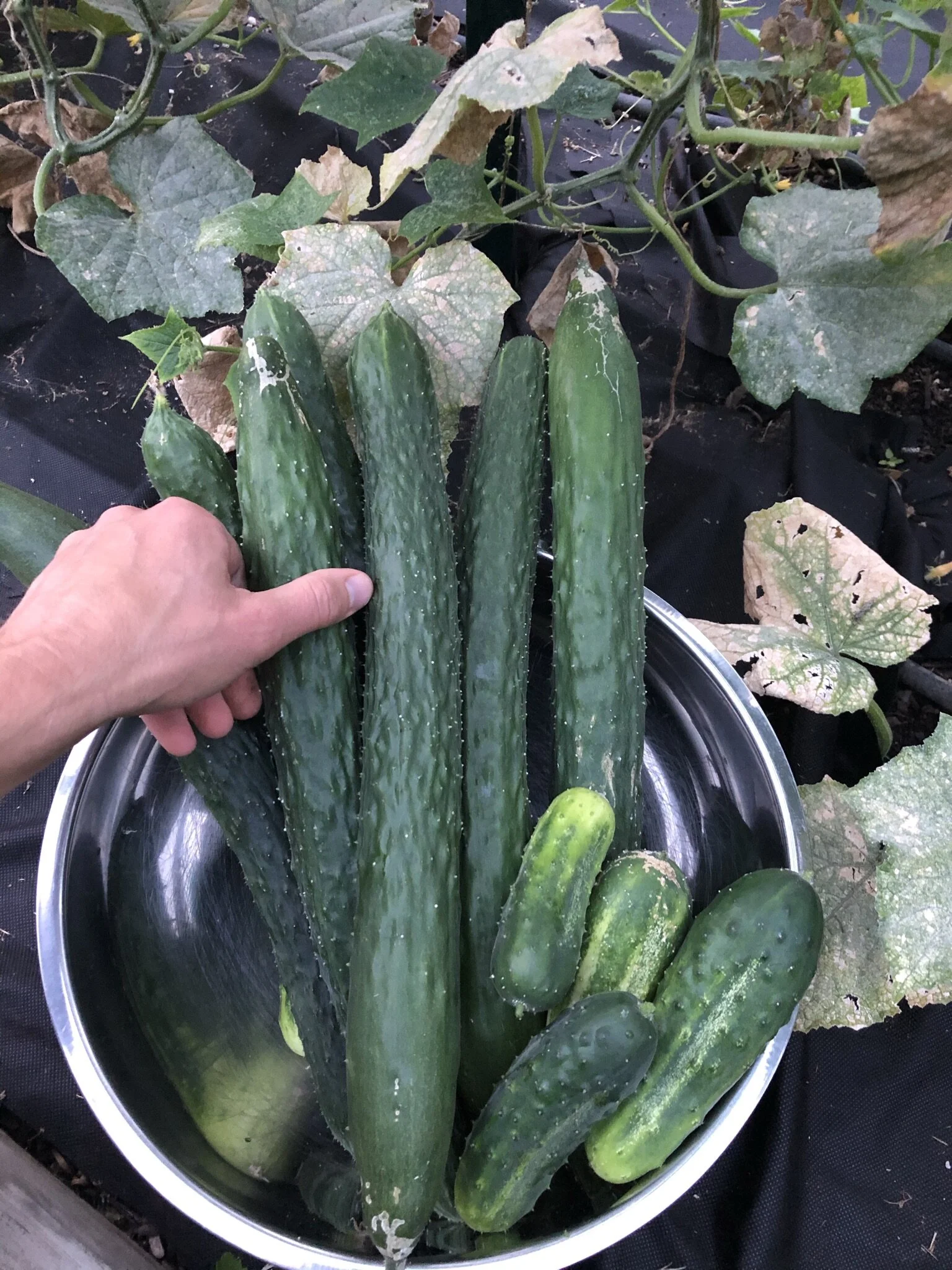The summer garden is sort of a transition period for me.
The summer garden is my least favorite and I really try to use it as a bridge to the fall/winter garden. By mid-June the weather gets hot and the insects are getting to their height: this will bring failed crops. Since I don’t spray anything this means I will inevitably lose things, but I still get plenty of food in the summer.
The main thing to remember is that it is during summer that you end up planting all your fall/winter garden. For example, the winter cabbages are going to be in the ground by end of July (this gives them a solid 120 days to get to maturity before the sunlight diminishes too much. And your final sowing of carrots here in Northern Virginia have to happen by mid-August to give them 60 plus days of growth before the sunlight gets minimal.
Summer is also awfully tricky to grown salad greens that really don’t like the heat; you can do it but expect them to bolt and the seed germination to be tough (unless you germinate inside your house like I do).
Here is what the summer garden provides:
The tomatoes start to roll in by the mid or end of June
I will get my second sowing of carrots in August
The winter cabbages go into the ground from indoor-made transplants around late or mid-July
The regular potatoes are harvested at the end of May. The Sweet potatoes go in the first week of June.
I have Daikon radishes that I pull
I keep some salad greens (kale, mustard greens, etc.) rolling all summer
The cucumbers are really moving at this point
I am pulling some Hakurai turnips usually at the end of June/beginning of July.
The bell peppers are also coming in strong
And I have some beets that I will pull in Mid-July (the second harvest of the year).
Below are some pictures of the summer garden





